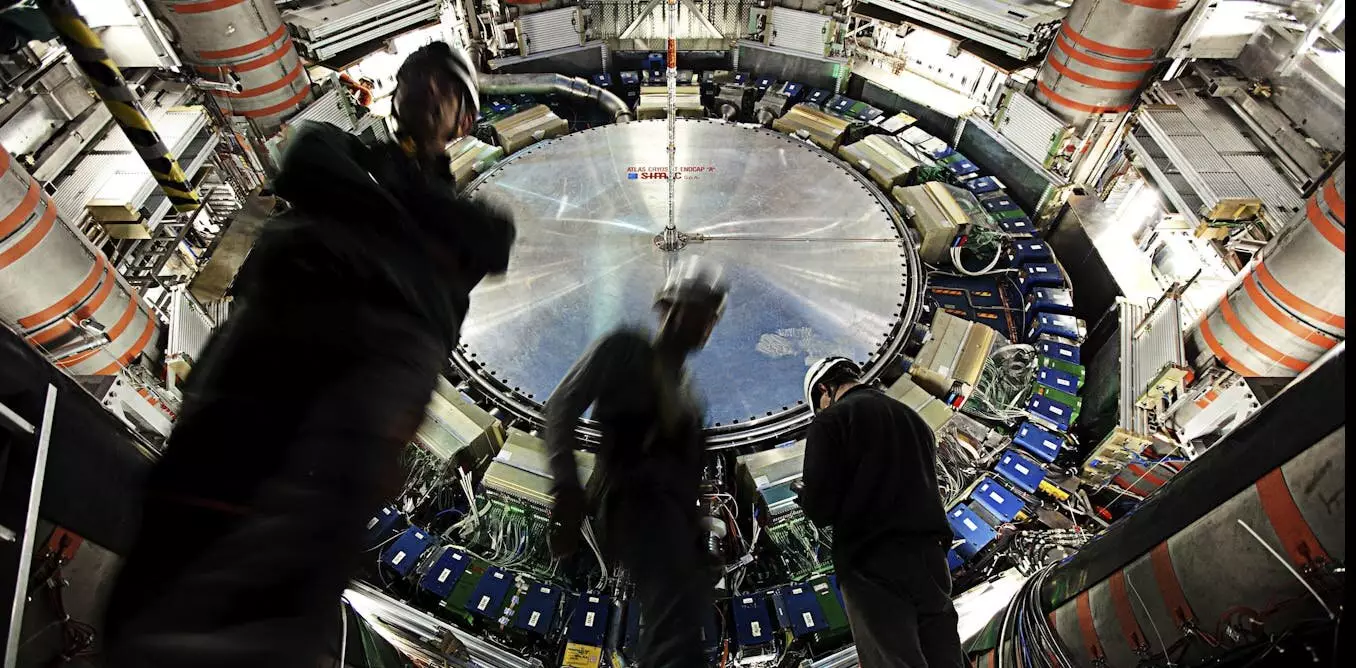Quantum entanglement is one of the most intriguing concepts in physics, defying our everyday perceptions of connection and separation. This phenomenon allows two particles to remain interconnected regardless of the distance separating them. Classic examples of entanglement often involve photons—particles of light—however, recent advancements have pushed the boundaries further. At the forefront of these advancements is the Large Hadron Collider (LHC) in Switzerland, where researchers have recently observed entanglement among pairs of top quarks, the heaviest known particles in the universe. This revelation is revolutionizing our understanding of particle physics and the very fabric of reality.
The idea of entanglement can be perplexing. When we think of objects, we typically categorize them as either independent entities or physically connected by some form of bond. For instance, two balls placed a kilometer apart are clearly separate, while two connected by a string are seen as linked. However, entangled particles defy this binary classification. They exist in a peculiar state where measuring one instantly informs us about the state of the other, regardless of the physical distance between them. The implications of such a connection can feel extraterrestrial, reminiscent of narratives found in science fiction, as exemplified by the series adaptation of Liu Cixin’s “3 Body Problem”.
Top quarks have become a significant focus of research at the LHC due to their unusual properties. Measuring in at over 174 GeV/c², top quarks are not just heavy—they are the heaviest of all quarks, heavier than a gold atom. This sheer mass intrigues physicists who seek to unlock the mysteries behind it. Understanding why top quarks possess such weight may provide insights into unexplored forces within the universe.
Current physics acknowledges four fundamental forces: gravitational, electromagnetic, strong, and weak. However, the top quark’s massive nature might signal the presence of new forces or phenomena beyond the established laws of physics. Ongoing studies of top quarks hold the potential to reveal hidden aspects of the particle world, advancing our comprehension of both fundamental and exotic physics.
Entanglement has historically been a slippery subject to capture experimentally. Achievements in detecting entangled photons have marked important milestones since the 1980s, yet these advancements have predominantly occurred in low-energy systems. However, by discovering entanglement amid top quarks, scientists have thrown open doors to high-energy physics that challenge existing theoretical frameworks.
The intricacies of entanglement do not come without challenges. Quantum systems are notoriously sensitive, necessitating ultra-cold environments to preserve the entangled state. Nevertheless, researchers have adapted to these conditions, thus permitting progressive explorations into entanglement. The recent efforts surrounding top quarks highlight their footprint in advancing our experimental toolkit. The successful measurement of entangled top quark pairs demonstrates feasible ways to investigate deeper nuances of quantum behavior at scales previously deemed unapproachable.
As we delve deeper into the enigmatic world of quarks and quantum mechanics, entanglement stands as a beacon for future technological marvels. While the prospect of harnessing entangled top quarks for practical technologies comparable to existing computational methods may currently be unrealistic, their study could set the groundwork for future breakthroughs. The fascination with entanglement continues to inspire ongoing research, encouraging physicists to explore new paradigms within quantum theory.
Coupled with considerations of the top quark’s substantial mass, researchers are exploring possibilities that could redefine our understanding of quantum properties. The goal is not solely to elucidate fundamental physics, but also to unveil new avenues for technology inspired by these quantum phenomena. The exploration of entangled particles is not merely an academic exercise; it could pave the way for revolutionary developments in quantum computing, cryptography, and beyond.
The recent findings at the LHC signify a watershed moment in our understanding of both quantum mechanics and the universe’s heavyweights, the top quarks. By probing the fascinating phenomenon of entanglement in these particles, researchers embark on a mission to explore the unknown territories of physics. This ongoing work serves as a testament to humanity’s unyielding curiosity about the universe, combining theoretical inquiries with experimental endeavors that could redefine the limits of science and technology in the years to come. As the journey into quantum realities unfolds, each discovery enhances our grasp of the intricate web binding the universe together.


Leave a Reply